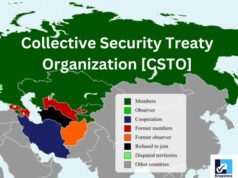China’s production Chain Shattered And Broken The Global Supply Chain

Globalization is facing an unprecedented backlash as delivery delays and inventory shortages caused by the ferocious coronavirus outbreak have put the Chinese economy in doldrums with risks of heavy unprecedented losses. Many countries in the world had made the mistake of becoming highly dependent on China’s manufacturing and its supply chain, at risk of heavy losses.
Though China is making great efforts to promote work resumption to address the disruptions to the global supply chain, it will be quite some time before things start limping back to normal. To a large extent, how fast China can return to work is crucial to its own economic reboot. However the future of globalization is certainly going to change, as safety firewalls are going to be erected by each country to prevent such future disruptions.
The virus outbreak has already led to some companies to shift their supply chains away from China. Many manufacturers in industries like vehicles, smartphones and even textiles had to halt production or are on the verge of work suspension due to inventory shortages. Now these manufacturers are looking at other countries in the region which has the capacity to take on the task and slowly replace China’s role in the global industrial chain. Even when work resumption takes place in China it cannot end the current predicament facing the global economy. Manufacturers will henceforth seek diversity and not place all their eggs in one basket.
Over the past few weeks, the network connecting and supporting China’s manufacturing activities has been greatly disrupted as part of the effort to contain the virus’ spread. Now China is desperately trying to get economic activities back to normal. Production chain outside Hubei, the epicenter province of the coronavirus outbreak, are being restarted. Work resumption, transportation, customs, ports and all other supporting industries presently shutdown require activation.
In order to revive the almost stagnant economy, Chinese financial regulators have rolled out measures such as liquidity injections, loosened credit, tax cuts and exemptions to prevent the country’s small and medium-sized enterprises (SMEs) from being overwhelmed by heavy operation burdens. While support measures may alleviate the pressure, their survival depends on the market, not subsidies, and market supply gaps won’t wait forever. China is trying to claw back to normality.
According to the Ministry of Industry and Information Technology, only 30 percent of SMEs have restarted operations. The progress of the nationwide work resumption has been indeed slow and dismal maybe because the fight against the virus is still on .,
Globalization has integrated the global value chain, which China has benefited from but now it has left other advanced countries in a lurch. China’s importance to the world economy built on its manufacturing strength is now completely shattered. It is impossible for the global production chain to wait for China’s restart for too long.



